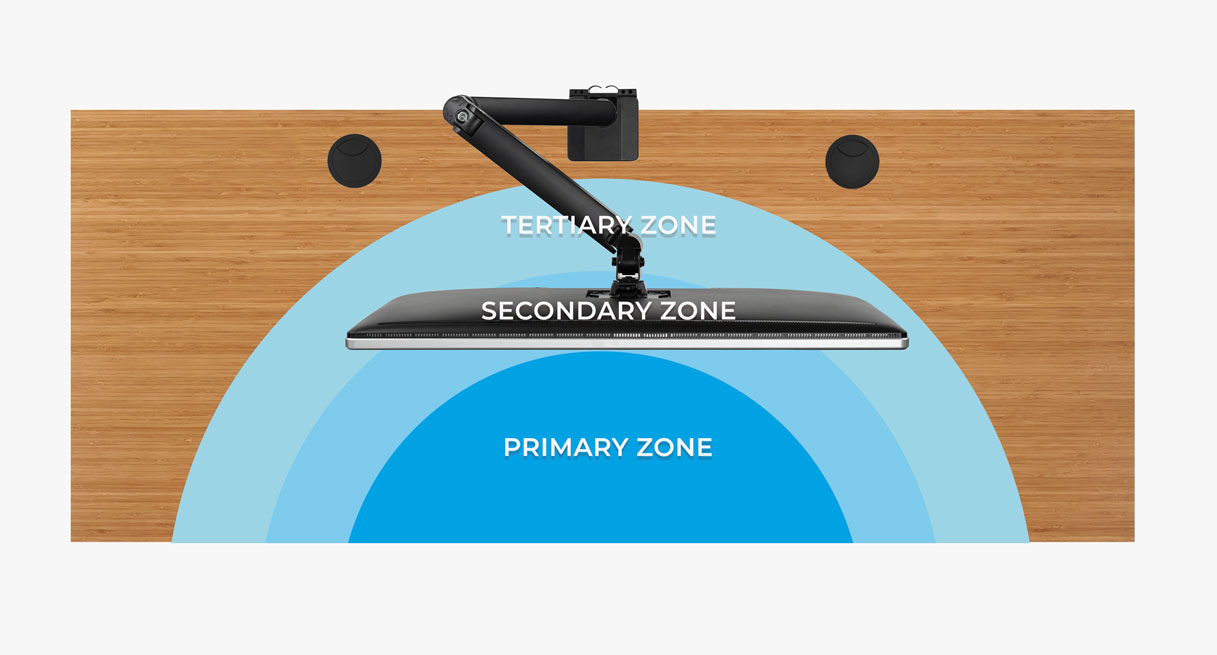
What are ergonomic zones?
Take full advantage of the primary, secondary, and tertiary ergonomic work zones.
Working in an ergonomic environment promotes better posture, reduces muscle fatigue, and increases overall efficiency. A well organized ergonomic desk is one of the most important elements of a productive workspace. By understanding what an ergonomic zone is and how it contributes to your workspace, you can optimize layout and accessory placement to work smarter at any workstation. Let's take a closer look at the different zones that make up an ergonomic desk.

The primary work zone
The primary work zone contains items used on a regular basis. This includes your computer monitor, keyboard, mouse, and other in-use accessories such as documents or folders. The goal of this zone is to ensure that all necessary items are within easy reach so that you don't need to strain or stretch too far when accessing them.
The secondary work zone
The secondary work zone contains items you may not need on a daily basis but still want within easy reach. This could include phones, books, files, pens, pencils, calculators, and other office supplies. By keeping these items close by but slightly out of reach from your primary work zone, you can stay organized while also optimizing your productivity levels and reducing distractions as much as possible.
The tertiary work zone
The tertiary (third) or peripheral work zone contains items that are used less frequently than those in the primary or secondary zones but still form part of your regular workflow. These could include printers, scanners, infrequently used books/manuals and larger documents. By keeping these items out of sight but easily accessible when needed, you can minimize disruptions while maintaining efficient workflow processes throughout the day.
How to optimize your desktop's ergonomic zones
By understanding the different zones of your desktop and how they fit into your overall workspace, you can create an ergonomically optimized environment that is tailored to your needs. Here are some practical tips for optimizing the ergonomic zones of your desk:
- Place all frequently used items within easy reach in the primary work zone. Consider a larger L-shaped desk if your primary zone is overflowing.
- Include a quality keyboard tray in your desk configuration to open up space in the primary zone, ensure comfortable typing, and reduce stress on the wrists.
- Arrange secondary items such as books and folders in an organized manner so that they are accessible when needed.
- Place peripheral items such as printers and scanners further from the main work zone to minimize distractions. If there isn't enough room on the desk, consider moving these items under the desk or to fixed height side tables.
- Make sure your monitor is at eye level and that the screen is not too close or too far away from your eyes. You should be able to use an outstretched arm to touch the screen. Screens that are too far away cause the eyes to have trouble reading text and the neck will crain forward causing neck and back pain and eye strain.
By following these tips and keeping the three ergonomic desk zones in mind, you can create a workspace that will help you maintain your productivity and stay healthy.